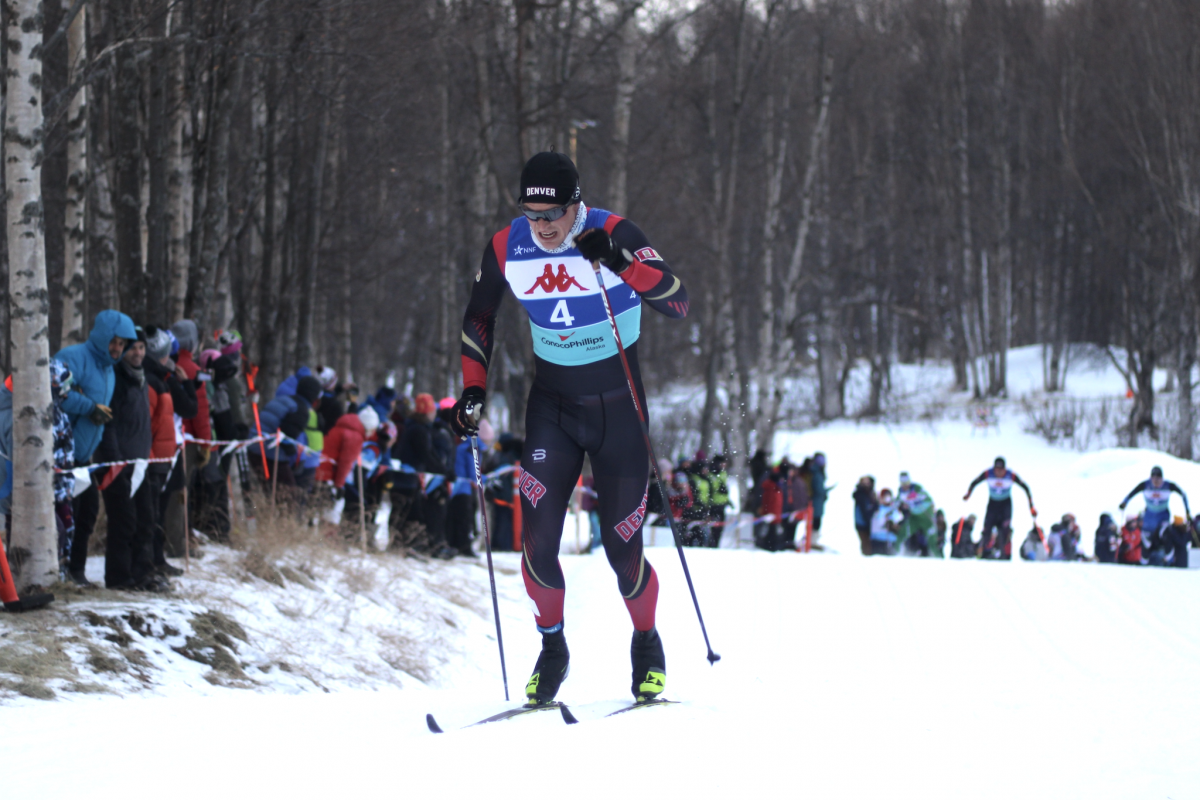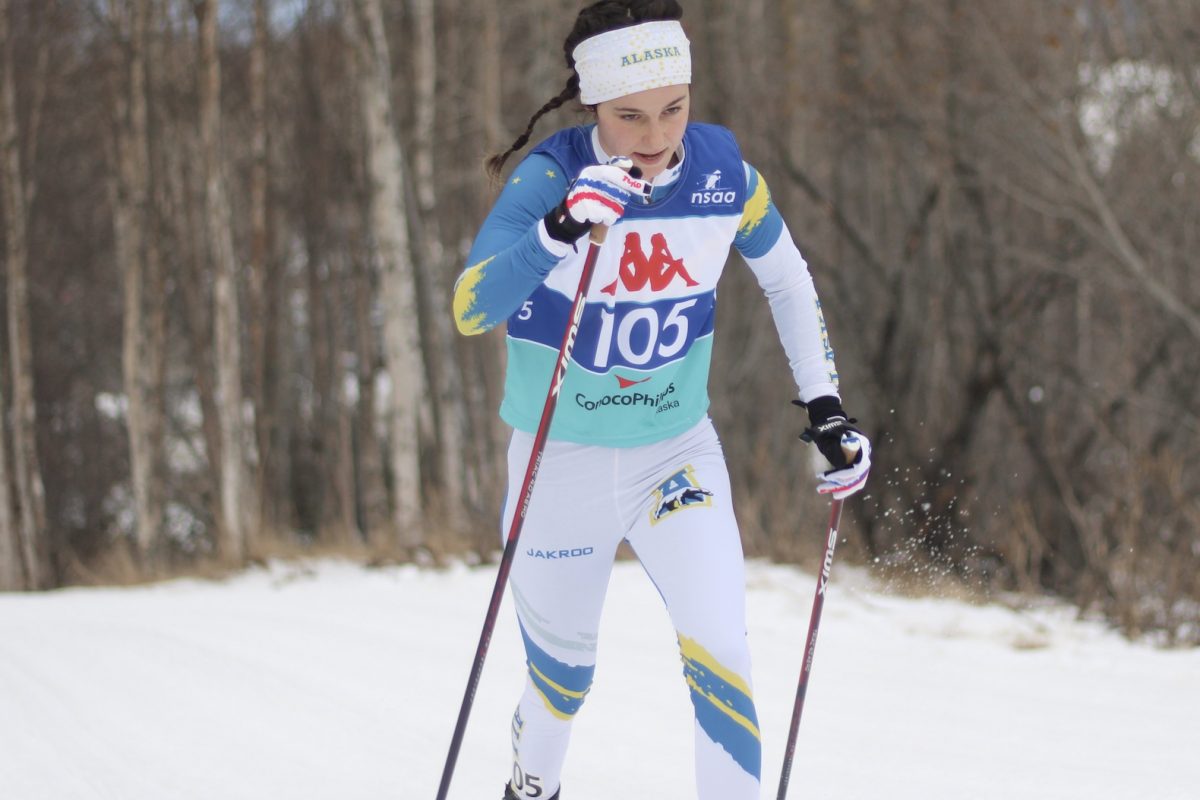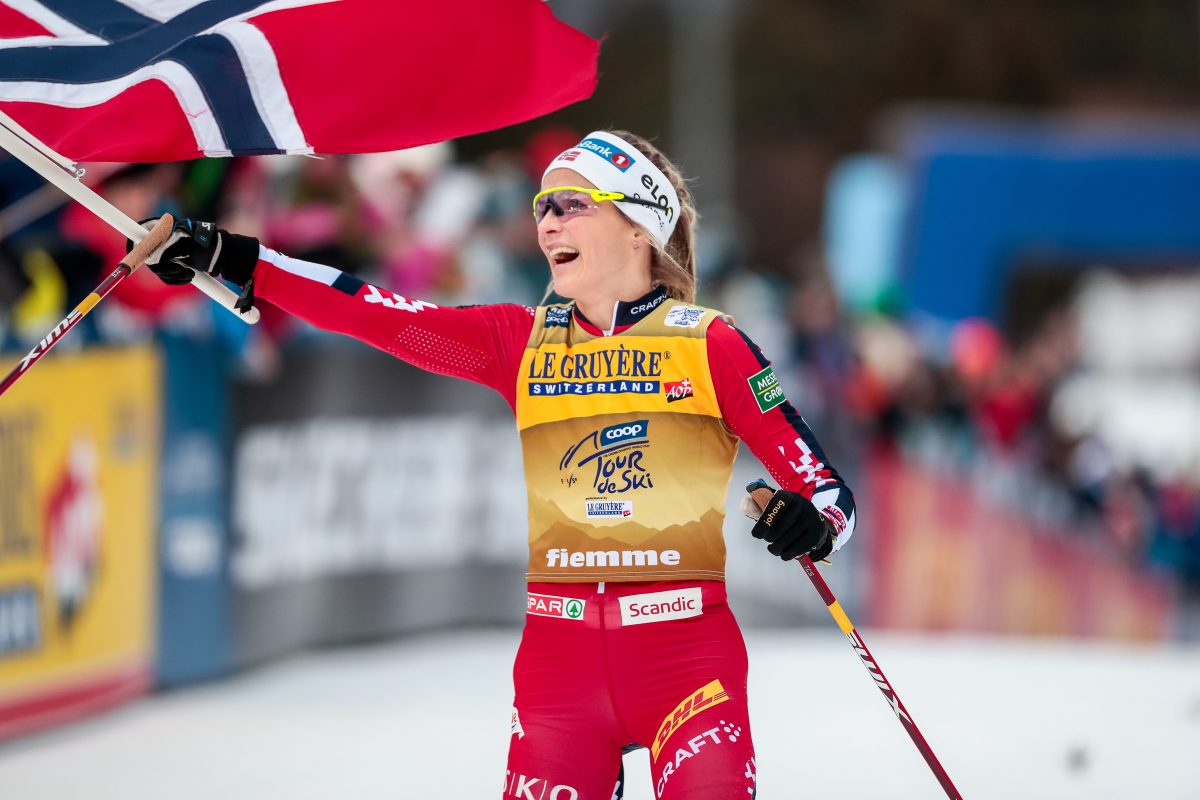Fairbanks, AK
The state of Alaska remains an enigma to many in the lower 48. From tall tales of living in igloos to stories of cities draped in permanent darkness, many Americans have developed their own mythology for what life in The Last Frontier is like.
Even the world of Nordic skiing has not escaped such generalizations. Just ask the University of Alaska Fairbanks. Their Alaska Nanooks women’s ski team has run into a number of such fables when attempting to recruit athletes: the most common being that because it is so cold, and the snow is drier, Alaskan skiers are simply not able to train and compete at the same level as other states.
“We really want to dispel the myth that when people come up here, they get slower,†said Alaska head coach Scott Jerome. “We have blown that misconception away. Yeah, it can be cold. Yeah, it can be dark. But in spite of that, we are becoming one of the better teams.â€
Jerome’s case does have convincing evidence. In 2005-06, Elisabeth Habermann, despite being a solid skier for the Nanooks, failed to qualify for the NCAA meet. One year and many hours of hard work later, however, Habermann beat out over 170 other women to claim a spot on the U.S. World Junior Championship team, representing America at the WJCs in Tarvisio, Italy.
“For Elisabeth to ski for her country at the Junior World Championships is obviously huge,†said Jerome. “She worked hard for it and I think she surprised even herself. It just shows that we have the facilities, the coaching and the resources to enable our athletes to compete at even the international level.â€
Alaska teammate Julia Coulter shares a similar success story. Like Habermann, there was no room for Coulter at the 2006 NCAA meet, though she did earn a spot as an unused alternate. In 2007, however, there was no leaving Coulter out, as she roared to fifth place in the women’s NCAA Central standings, backed by two top-ten finishes at the Central Collegiate Ski Association’s Championships, and achieved All-American status with her ninth place finish in the NCAA 5K Freestyle.
But perhaps no case is more compelling than Aurelia Korthauer’s. Skiing in her first season with the team in 2005-06, Korthauer failed to qualify for the NCAA Championships, and could only manage a 17th place finish at the CCSA Finals. Last season, Korthauer finished the year as an All-American, landing a team-best fifth place finish in the 15K Classic race at the national championships. She posted two top-ten finishes at the 2007 U.S. National Championships, and became a member of the All-CCSA First Team, racking up a conference-best 123 points during the regular season.
Alaska’s development is not just evident in their individual achievements, but also in the success of the team as well. In both 2004 and 2005, UAF qualified just four skiers to the NCAA Championships. Last season, the Nanooks sent a full team to the finals for just the second time in school history.
With this increased involvement at the NCAA Championships, UAF has become a consistently competitive skiing school. Since 2001, the school has finished in the top 15 at the NCAA Championships, jostling for positions amongst Division I powerhouses such as the University of Colorado, the University of Denver, and Dartmouth. As recently as 2006, Alaska was among the nation’s top ten teams, when the team collected a school record 271 points. The Nanooks have achieved all this without the benefit of an Alpine team: on Nordic points alone, the Nanooks finished sixth, fifth and ninth at the last three NCAA Championships, respectively.
“As a program, we have really moved from where we might have a good showing every once in a while to a team that people know is going to be competitive at the national level, year in and year out,†said Jerome. “We are about coaching and development here, and because of that, we continue to improve. Every year, the girls are getting faster, and the team is getting better.â€
The key to the Alaska’s success? Recently, it has been the emergence of young American skiers that has driven the Nanooks. On the women’s roster last season, five of the team’s seven skiers hailed from the United States. “UAF skiing hasn’t been an American phenomenon until recently,†said Jerome. “But it is exciting to be helping the U.S. student-athletes get better. It might be easier sometimes to get an international recruit, but we are committed to discovering and developing young American skiers, and taking them to the next level.â€
While the success of their American athletes may be a new occurrence, the Nanooks will make sure it is not just a passing fad. With six U.S. athletes lining his roster for next season, Jerome believes his American contingent can help sculpt his team for years to come. “We really want to keep the success of our American athletes going,†said Jerome. “Almost all of the women we have now are going to be with us for two more years. Not only will they continue to improve, but they will also be able to share their experience, and really help develop the next wave of skiers at UAF.â€
Both in recruiting and instruction, the leadership of its two coaches, Jerome and assistant Ingrid Olson, has been invaluable for Alaska. Jerome, a three-time MIAC Coach of the Year with Gustavus Adolphus College, is beginning his 15th season as a ski coach, while Olson, a talented skier in her own right at Gustavus, is in her fourth year in charge of the Nanooks. Having spent the good part of eight years together, Jerome and Olson have developed a strong working partnership.
“Our strengths as coaches are the relationships we develop with the team,†said Jerome. “We have a smaller team, so we really get to know the athletes well. We think that is important, because then we can know all the subtle details about our skiers: whether they are overtrained, undertrained, and all the little things that can help them get motivated and ski better. Building that relationship really helps in the long run.â€
One of the most important relationships that Jerome and Olson have cultivated is the connection between their program and the University of Alaska Fairbanks itself. The school has become one of the biggest backers of the ski team over the years. “We have been given a good budget, two full-time coaches, trails on campus and an administration that has really supported us over the years,†said Jerome. “A lot of schools would try to cut corners over the years, but we get what we need to get to be successful.â€
The city of Fairbanks also lends itself well to the UAF ski program. The Nanooks benefit from having world-class facilities, The Jim Whisenhant Ski Trails at Birch Hill, located just 15 minutes from the ski room door. “Birch Hill is simply a phenomenal facility,†said Jerome. “They could hold World Cup races there if they wanted to.â€
Skiing is usually available in Fairbanks by mid-October, making it a popular choice for an early season training spot, and a common practice destination for the U.S. National team. Since the ski season can stretch to the end of April as well, skiers in Fairbanks can get anywhere from two to four months more skiing a season than other cities.
“You won’t find a stronger skiing community anywhere,†asserts Jerome. “From both the university and the community itself, this type of support is unprecedented.
With all these things working in their favor, Jerome and Olson are excited about where their program is headed, and foresee an exciting future for their women’s ski team. “Even though we have come a long way, we are still growing and always looking toward the future,†said Jerome. “I would invite anyone who is hard working, adventurous, and truly dedicated to skiing to ignore any of the myths that they’ve heard about Alaska, and seriously consider UAF. Come up for a visit before you pass judgment, and you’ll see that, above all, the people here really care about skiing.â€
Tom Myrick is a Sports Information Intern at the University of Alaska Fairbanks.




